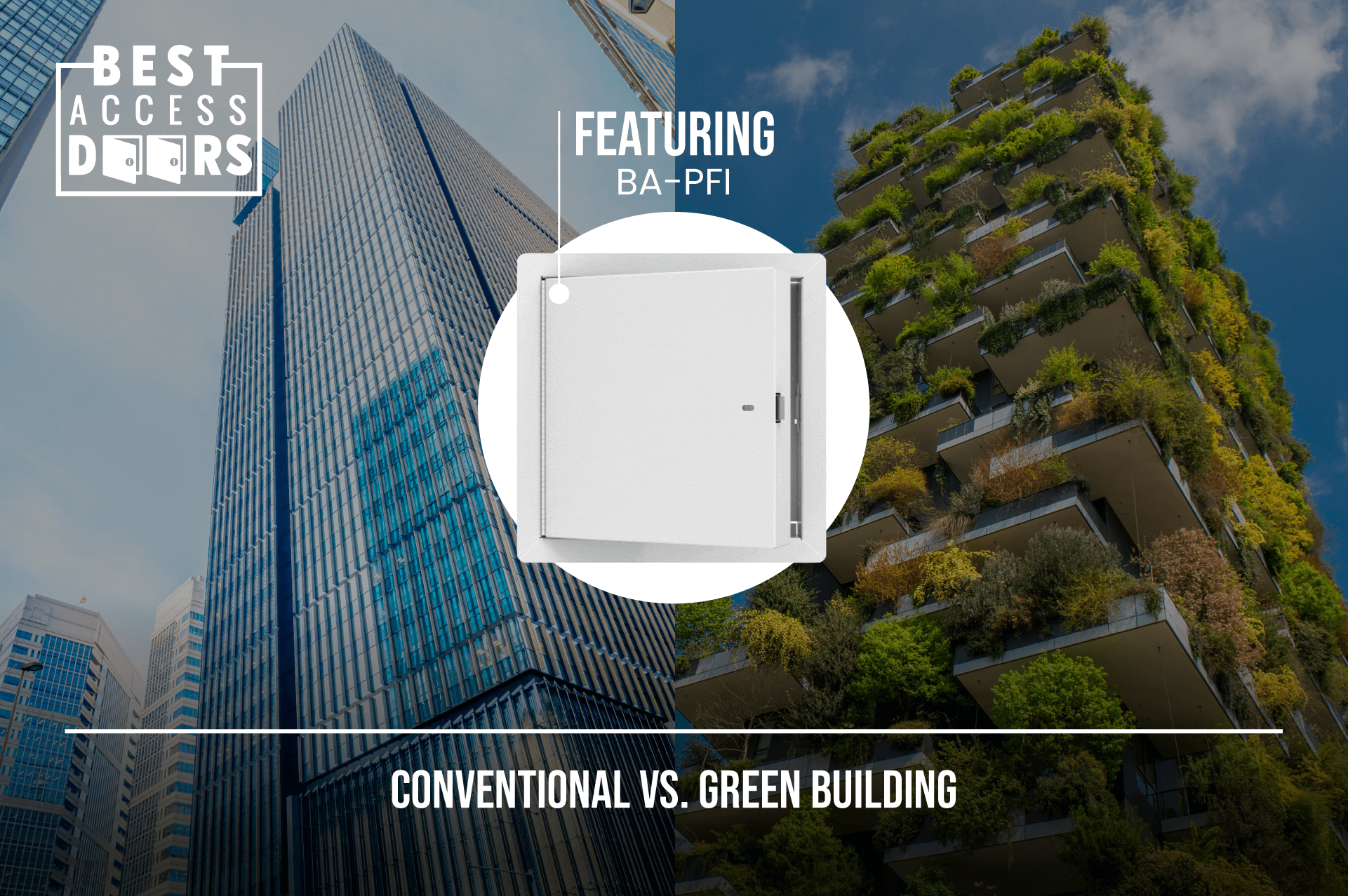Conventional vs. Green Building
Posted by Best Access Doors on 15th Aug 2018
When it comes to construction or any building project these days, there are two alternative: conventional or green. Both have their benefits, and both have a price – the question is, which are you willing to pay for?
Best Access Doors breaks down the differences between conventional and green building from insulation to framing and more.
Insulation
When it comes to conventional building, insulation is often done with the use of foam boards and a choice of insulation that are made of non-recycled materials, resulting in higher density and stiffness. However, a more sustainable alternative is now available with the BA-PFI Fire-Rated Insulated Access Door. By incorporating this innovative product into the construction process, not only can we achieve effective insulation, but we can also contribute to environmental preservation. Unlike traditional insulation materials that do not disintegrate or biodegrade when disposed of in landfills, the BA-PFI offers a greener solution that promotes sustainability and reduces waste.
Green building however considers all facets of the environment and when it comes to insulation, the type of insulation used are typically made with wood or wool fibers. These alternatives means that when it comes to time for replacing panels or exchanging them they are highly recyclable and environmentally friendly.
Framing / Structure
Green building practices are fairly new-age which is a stark contrast to conventional building which have been around for centuries. Conventional buildings have traditionally been built using bricks, concrete and steel; however, green buildings use materials that are earthly. This includes everything from timber, stone and straw (depending on the climate and region). The principles of building when it comes to framing and structure also vary between the two with conventional building focusing heavily on functionality, while green building is about sustainability and considers those who are environmentally conscientious.
Flooring
Next to a walls and a roof, the floors are essential to any building project. When it comes to conventional flooring it is very similar to insulation in that the materials often selected are readily accessible and cost-efficient to a contractors’ budget. The materials that find themselves in the landfills are typically not biodegradable because they have been made or enhanced with chemicals. With green building, the floors do not undergo any chemical manipulation or the same manufacturing processes that conventional floors undergo.
Examples of conventional floors include: concrete, wood laminate and tile. Green flooring, while slightly costlier per square foot, they offer a natural and aesthetically appealing look – some green materials include: bamboo, hardwood and stone.
Design
One of the greatest differences between conventional and green when it comes to design is that conventional buildings are done with the intent of having the greatest level of functionality as well with the possibility of mass reproduction or levels. When it comes to green designs however, a contractor, architect and builder will consider a design that would have minimal if possible no impact on the surrounding and overall environment. They consider the current place and try to build within the parameters that exists. Green designs also consider having a natural flow and symmetry – while conventional designs have little to no consideration of the surrounding environment, even if it means having a 70-story building that is surrounded by lower-level buildings.
Budget Considerations
There are many considerations a contractor and engineer must consider, materials is one thing but what goes hand in hand with that is the overall budget. With conventional building because the materials are readily available and have been used for centuries they are often cheaper to buy in bulk than that of green building. When choosing to build green the budget must be considered because choosing to go all green in a project can be costly – from flooring to insulation and much more.
Attention Contractors, Architects, and Designers!
At Best Access Doors, we have the perfect solutions for your projects, regardless of their size. Whether you're working on a residential, commercial, or industrial building, our extensive range of high-quality products is designed to meet all your access panel needs.
Our knowledgeable staff is ready to assist you, providing expert guidance and ensuring you make an informed decision. But that's not all! We also have an informative blog tailored to the needs of both seasoned professionals and budding builders. Stay up-to-date with the latest industry trends, tips, and insights by checking out our blog.
Contact us now at 1-800-483-0823 and let us help you find the perfect access panels for your next project.
Share our story - the 2025 version is available

